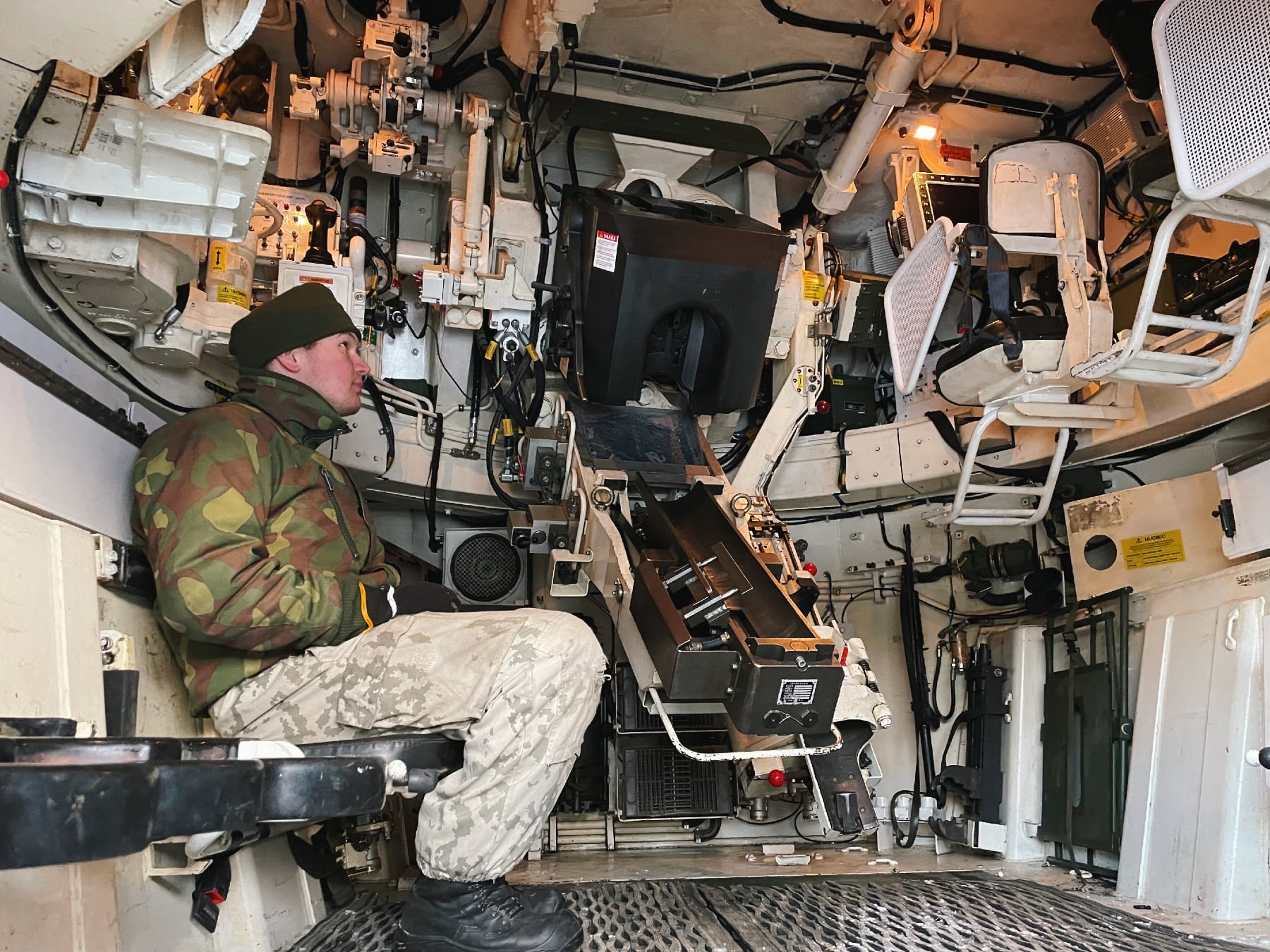ROVAJÄRVI, Finland — Roughly 100 kilometers from the Finnish-Russian border, on a snowy November day, a soldier’s command rips through the frigid air: “Avfyra!” That’s the Swedish call to fire the Archer self-propelled howitzer system that sits camouflaged between a line of thin trees. The gun lets out a burst of two shots, the rounds clearing the barrel to strike a target called in by Finnish soldiers elsewhere on the range.
These are some of the hundreds of munitions that were fired here near the Arctic circle during Exercise Lightning Strike 24 (LS24), where five NATO artillery units – the French, British, Swedish, Finnish and Americans – practiced joint long-range fire capabilities.
LS24 is part of the Dynamic Front series, the alliance’s largest artillery exercise series ever conducted in Europe, taking place across five countries – Finland, Estonia, Germany, Romania and Poland.
The name of the game here in Lapland, the northernmost region of Finland, was to have a call for fire made by one of the nations and the fires delivered by other ones to increase the interoperability of the different artillery systems. In total, this leg of the exercise included 130 pieces of artillery equipment, according to Finnish Col. Janne Makitalo, the event’s director.
The training was meant to rehearse the chain of forward observers finding simulated targets and sending their coordinates to the guns for “servicing,” as the jargon of artillerymen goes.
The information passed digitally all the way to the different platforms, including to the unit in charge of allocating the fire mission, the Allied Rapid Reaction Corps, or ARCC, a rapid reaction force maintained by NATO. Officials at that unit, alongside with supporting formations, determined where and which national artillery platform could best respond and would connect it with the assignment.
Ideally, it’s a relay race of sensors and shooters across multiple nationalities, in the blink of an eye.
“When we speak of deciding of the best platform – whether it is Swedish, British, or French – the decision is not based upon the national unit [per say], it is based upon how we can get the best effect on the ground,” British Col. Alex Forbes, commander of the multinational field artillery brigade told reporters.
The specific system that connects all the pieces is ASCA, which stands for Artillery Systems Cooperation Activities, NATO’s digital language for putting “warheads on foreheads,” as another U.S. military adage goes. It’s an encrypted software suite that creates a unified network of communication, digitally linking artillery and command and control systems from different nations.
The software also allowed the sharing of real-time information about the simulated battlefield to other units in Estonia and Germany. While it was created in the 1980s, it gets refined every time it is used in exercises or other events, based on what worked and what did not in the evolving nature of combat, U.S. officers told Defense News.
Fifteen countries used ASCA throughout the event, the highest number ever integrated in a NATO exercise, which allowed to nullify language barriers and share all targeting data between users regardless of individual fire control systems.
Forbes explained that in terms of artillery, the types of operations practiced here, while complex, were necessary to help further the “deconfliction of fires across a battlefield,” something participants were now achieving in an advanced manner.
The exercise scenario featured a simulated near-peer enemy confined to a small “kill-box” – another military term of art that describes a geographic location from which it’s best to stay away – that allies had to neutralize by “massing multinational fires to enable freedom of movement for infantry and armor forces,” Maj. Nicholas Chopp, deputy media chief for US Army Europe and Africa said.
Artillery units used small drones, deployed from concealed sites, to secure the fire missions while vulnerable. Finnish F-18 Hornets were also in the air to help service targets.
Shortening the ‘kill chain’
An objective identified by the heads of the participating artillery units, inspired in part by Russian tactics in Ukraine, was to shorten the amount of time required between the identification of a target and the shot.
“The link between C2 [command and control], the drone and the launcher has to be shortened… We are trying to work on this here, accelerating the time between the target acquisition and the firing,” French Brig. Gen. Eric Lendroit said during a press conference here on Nov. 20.

Maj. Gen. Rafferty, the head of the U.S. 56th artillery regiment, added that Ukraine served as a reminder that the Russian Army “is built around the fires of war-fighting action,” that is long-range artillery protected by sophisticated air defenses.
The U.S. official said that if they were to “counter” such an advantage, then NATO countries have to keep on practicing as a “multinational fires and artillery team” to enable combined arms maneuvers.
Even in light of significant shortages of ammunition faced by several European countries, officials told Defense News that magazine depth – that is, not having sufficient rounds in combat – was not a constraint of the exercise.
While Rafferty and Brig. Gen. Takamaa, Finnish deputy chief of staff for Army operations, said they were unconcerned about munition scarcity, given that the U.S. and Finland both accelerated the production of 155mm shells, the French official shared a different perspective.
“We all know that in [almost] all the nations the stock of ammunition is a key issue – but at the tactical level, [one thing we do practice] is to have the best target acquisition and ammo to produce the greatest effect to minimize our consumption of munitions,” he said during the press conference.
Elisabeth Gosselin-Malo is a Europe correspondent for Defense News. She covers a wide range of topics to military procurement and international security, and specializes in reporting on the aviation sector. She is based in Milan, Italy.
Read the full article here
